Frida Kahlo is one of the most celebrated artists in history. Her self-portraits are not just paintings; they are windows into her soul. Each piece tells a story filled with personal struggles, cultural pride, and deep symbolism.
Kahlo’s work resonates with many people today. Her unique style and emotional depth invite viewers to explore their own identities. We will discuss 15 fascinating facts about the hidden symbolism in her self-portraits.
The Hidden Meanings Behind Frida Kahlo’s Self-Portraits (Short Details):
- The Unibrow: A symbol of defiance against traditional beauty standards, celebrating individuality and self-acceptance.
- Flowers and Nature: Representing femininity and the cycle of life, flowers in her work reflect both beauty and fragility.
- Animals (Monkeys, Cats, etc.): Symbolizing companionship and loyalty, animals in her portraits reveal her inner thoughts and emotional struggles.
- The Broken Column: A powerful image representing her chronic pain and resilience through physical suffering.
- Traditional Mexican Clothing: Symbolizing pride in her heritage, traditional attire showcases Kahlo’s connection to her cultural roots.
- Self-Portrait with Thorn Necklace: The thorn necklace symbolizes the pain of love and sacrifice, particularly reflecting her tumultuous relationship with Diego Rivera.
- The Heart (Exposed or Visible): An image of vulnerability, the exposed heart represents love, heartbreak, and emotional depth.
- Surreal Elements: Dreamlike imagery that reflects Kahlo’s subconscious mind and emotional turmoil.
- Mirrors: Symbolizing self-reflection, mirrors invite viewers to explore their own identities alongside Kahlo’s.
- The Colour Palette: Vibrant colours convey strong emotions, enhancing the overall impact of her self-portraits.
- The Influence of Diego Rivera: Rivera’s presence in her work symbolizes the complex bond that shaped both their artistic identities.
- Death Imagery (Skulls, etc.): Reflecting her fascination with mortality, death imagery confronts the reality of life’s fragility.
- The Use of Texts or Words: Textual elements provide context for her emotions, enhancing the storytelling aspect of her art.
- Duality (Life vs. Death): Exploring themes of duality, Kahlo’s work highlights the coexistence of joy and sorrow in human experience.
- Personal Artifacts (e.g., Medical Equipment): These items symbolize struggles with health while showcasing resilience through adversity.
Early Life of Frida Kahlo

Frida Kahlo was born in Mexico in 1907. Her childhood was marked by pain and hardship, which influenced her art deeply. A polio infection left her with a lifelong limp, shaping her view of beauty and strength. At the age of 18, she suffered a severe bus accident. This event changed her life forever and led to numerous medical issues. These experiences became central themes in her self-portraits.
Political and Cultural Context
Kahlo lived during a time of great change in Mexico. The Mexican Revolution influenced her identity and artistic voice. She embraced her heritage, using traditional Mexican clothing and symbols in her work. Her art reflects the culture of Mexico, blending personal and political themes. This connection to her roots adds layers of meaning to her self-portraits.
What is Symbolism?
Symbolism is a way artists convey deeper meanings through images. It allows viewers to interpret art beyond its surface. In Kahlo’s work, symbols often reflect her emotions and experiences.
Understanding these symbols helps us appreciate the complexity of her self-portraits. They reveal insights into her struggles and triumphs.
Kahlo’s Unique Symbolism
Kahlo’s symbolism is deeply personal. Each symbol represents aspects of her life, such as pain, love, and identity. Her unique style makes it easy for viewers to connect with her emotions.
By exploring these symbols, we can better understand Kahlo’s artistic journey. Her self-portraits invite us to reflect on our own lives.
Read More: Top 15 Paintings: Know Stories Behind History’s Greatest Art
Top 15 Symbols in Kahlo’s Self-Portraits
1. The Unibrow

Kahlo’s unibrow is one of her most recognizable features. It symbolizes defiance against societal beauty standards. By embracing her natural appearance, she challenges traditional notions of femininity. This bold choice reflects Kahlo’s commitment to authenticity in her art.
Read more: Top 15 Symbols in Kahlo’s Self-Portraits
2. Flowers and Nature
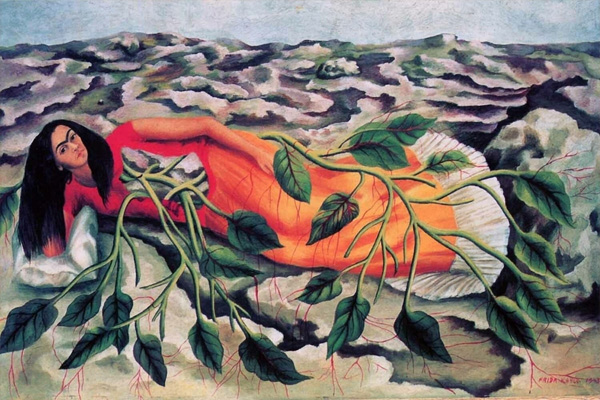
Flowers frequently appear in Kahlo’s paintings. They symbolize life, beauty, and death. Through floral motifs, she expresses the cycle of existence and the fragility of life. These elements add richness to her self-portraits, inviting viewers to contemplate their meanings.
3. Animals (Monkeys, Cats, etc.)
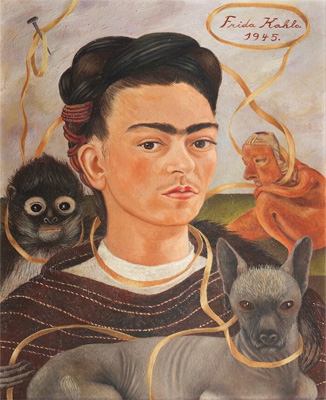
Kahlo often included animals like monkeys and cats in her work. These creatures serve as companions that reflect her inner thoughts and emotions. They symbolize freedom and loyalty amidst her struggles. The presence of animals enhances the emotional depth of her self-portraits.
4. The Broken Column
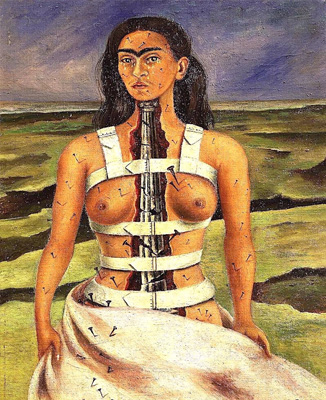
In one famous painting, Kahlo depicts herself with a broken column instead of a spine. This powerful image represents her physical pain and suffering. It serves as a reminder of the challenges she faced throughout her life. The broken column is a striking symbol of resilience in the face of adversity.
Read More: Top 15 Facts About How Dystopian Fiction Reflects Modern Societal Fears
5. Traditional Mexican Clothing
Kahlo often wore traditional Mexican attire in her self-portraits. This choice symbolizes pride in her heritage and identity. Her clothing choices reflect a connection to Mexican culture that permeates her work. By showcasing these garments, she celebrates her roots while making a statement about individuality.
6. Self-Portrait with Thorn Necklace
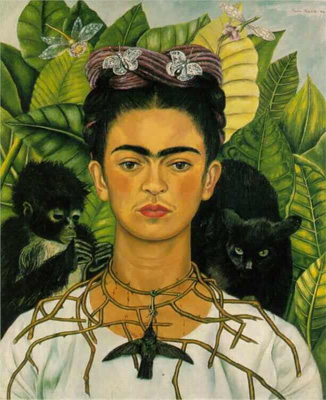
In “Self-Portrait with Thorn Necklace,” Kahlo wears a necklace made of thorns. This powerful symbol represents pain and sacrifice in love. It reflects the emotional turmoil she experienced throughout her relationships. This image encapsulates the complexity of love and suffering in Kahlo’s life.
7. The Heart (Exposed or Visible)
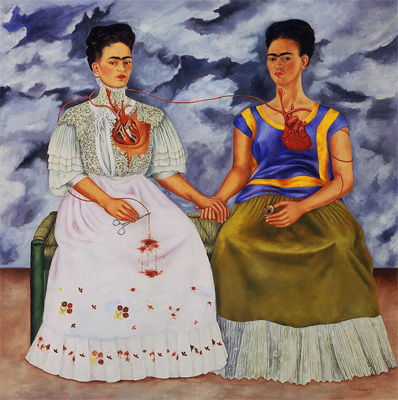
Kahlo often painted herself with an exposed heart or visible wounds. This imagery symbolizes vulnerability and emotional depth. It invites viewers to connect with her feelings of love and heartbreak. Through this powerful symbol, she shares intimate aspects of her life.
Read more: Frida Kahlo: Turning Tragedies into Complicated Beauties
8. Surreal Elements

Many of Kahlo’s self-portraits contain surreal elements that challenge reality. These dreamlike images reflect her subconscious mind and emotions. They create a unique atmosphere that draws viewers into her world. This use of surrealism adds layers to the interpretation of her art.
9. Mirrors
Mirrors play a significant role in Kahlo’s self-portraits. They symbolize self-reflection and identity exploration. By including mirrors, she invites viewers to consider their own perceptions of themselves. This element enhances the personal nature of her artwork.
10. The Colour Palette
Kahlo’s vibrant colour palette conveys strong emotions in her paintings. Bright colours represent joy, while darker tones signify pain or sadness. Her careful use of colour enhances the overall impact of each piece. This attention to detail makes each self-portrait resonate deeply with viewers.
11. The Influence of Diego Rivera
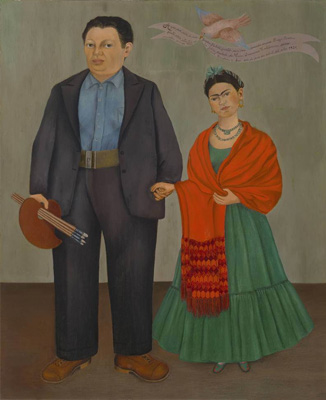
Diego Rivera was not only Kahlo’s husband but also an influential artist himself. Their relationship significantly impacted both their works and identities as artists. Rivera’s presence can be felt throughout many of Kahlo’s paintings. Their complex bond adds another layer to understanding Kahlo’s symbolism.
12. Death Imagery
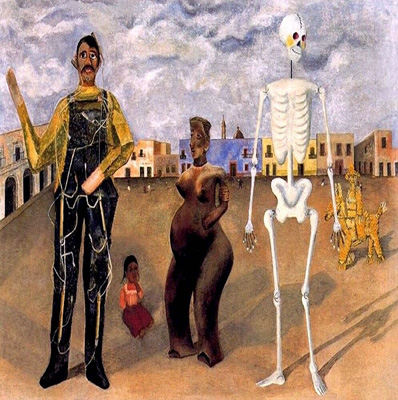
Death imagery appears frequently in Kahlo’s art, often represented by skulls or skeletons. These symbols reflect her fascination with mortality and the cycle of life. They remind viewers that death is an integral part of existence. This theme adds depth to the interpretation of her self-portraits.
13. The Use of Texts or Words
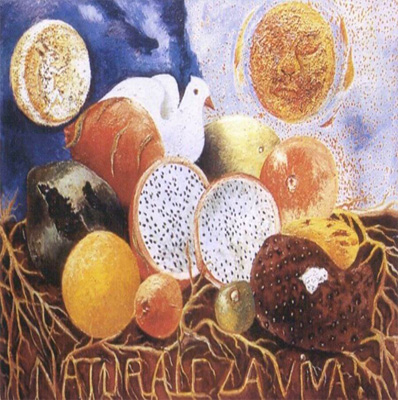
Kahlo sometimes included text or words within her paintings for added meaning. These elements provide context or insight into her thoughts and feelings at that moment. They enhance the storytelling aspect of each piece. The combination of visuals and words creates a richer experience for viewers.
14 Duality (Life vs. Death)
Many self-portraits explore themes of duality between life and death. Kahlo often portrayed herself at the intersection of joy and sorrow, reflecting on human experience’s complexities. This duality invites contemplation on our own lives’ contrasts. It highlights how intertwined these themes are within our existence.
Read more: The 5 emblematic paintings of the greatest Mexican painter Frida Kahlo
15 Personal Artifacts
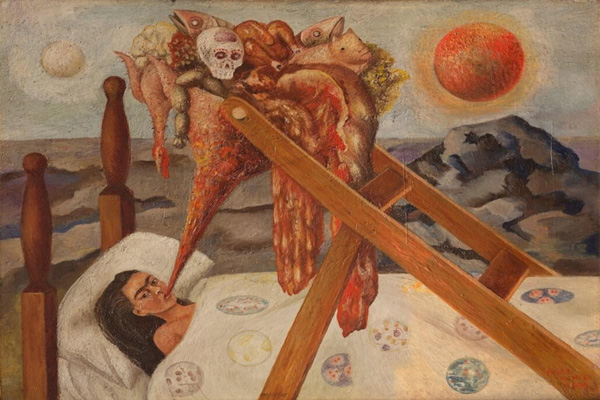
Kahlo included personal artifacts like medical equipment in some works to symbolize struggles with health issues. These items serve as reminders of pain but also resilience through adversity. They represent a part of who she was as an artist and individual. This inclusion adds authenticity to the narratives within her self-portraits.
Read More: Top 15 Best-Selling Books of All Time and Their Impact
The Impact of Kahlo’s Symbolism Today
Influence on Contemporary Artists
Frida Kahlo’s symbolism continues to inspire many contemporary artists today. Her ability to express personal struggles resonates with those exploring similar themes in their work. Many artists draw from Kahlo’s courage to share their own stories through art. Her influence can be seen across various mediums as artists seek authenticity like hers.
Cultural Relevance
Kahlo’s themes remain relevant today as society grapples with issues like identity and feminism. Her work encourages conversations about cultural pride and personal expression among diverse communities now more than ever before. By examining these themes, we can find connections between our lives and hers that inspire growth.
Final note:
Frida Kahlo’s self-portraits are rich with hidden symbolism that tells profound stories about identity, pain, love, and culture. Exploring these symbols helps us appreciate not just Kahlo’s artistry but also our own experiences.
15 FAQs(Frequently Asked Questions):
-
What inspired Frida Kahlo to start painting?
Frida began painting during her recovery from a severe bus accident at age 18. Painting became a way for her to express her emotions and cope with her physical pain.
-
How did Frida Kahlo’s health issues influence her art?
Her chronic pain and medical struggles are central themes in her work, often depicted through vivid imagery that reflects her emotional and physical experiences.
-
What role did Mexican culture play in Kahlo’s artwork?
Kahlo’s art is deeply rooted in Mexican culture, using traditional symbols, clothing, and folklore to explore themes of identity and heritage.
-
Why are self-portraits so significant in Kahlo’s work?
Kahlo painted 55 self-portraits to explore her identity and emotions. She stated, “I paint myself because I am often alone,” highlighting the personal nature of her art.
-
What themes are prevalent in Frida Kahlo’s paintings?
Common themes include pain, love, identity, feminism, and the complexities of life and death, often portrayed through symbolic imagery.
-
How did Frida Kahlo’s relationship with Diego Rivera affect her art?
Her tumultuous relationship with Rivera influenced many of her works, reflecting both love and heartbreak, as seen in pieces like “The Two Fridas.”
-
What is the significance of colour in Kahlo’s paintings?
Kahlo used colour symbolically to convey emotions; for example, bright colours often represent joy while darker hues signify pain or sorrow.
-
Did Frida Kahlo consider herself a surrealist artist?
While often associated with surrealism due to her dreamlike imagery, Kahlo preferred to describe her work as rooted in reality, reflecting her personal experiences.
-
How did Frida Kahlo’s style evolve over time?
Her style evolved from traditional portraiture to a more vibrant folk-art style that incorporated elements of Mexican culture and personal symbolism.
-
What impact did Frida Kahlo have on feminism?
Kahlo is celebrated as a feminist icon for her bold exploration of female identity and experiences, challenging societal norms through her art.
-
How did Frida Kahlo express her political beliefs in her artwork?
Her paintings often reflect her political views, incorporating themes of postcolonialism and social justice that resonate with the struggles of the Mexican people.
-
What is the legacy of Frida Kahlo today?
Kahlo’s legacy endures through her influence on contemporary art, feminism, and popular culture, inspiring countless artists and activists worldwide.
-
Why is La Casa Azul significant to Frida Kahlo?
La Casa Azul (The Blue House) was both her home and studio. It is now a museum dedicated to her life and work, preserving her artistic legacy.
-
How did Frida Kahlo’s upbringing shape her artistic vision?
Growing up in a politically charged environment during the Mexican Revolution influenced her views on identity and culture, which are central themes in her work.
-
What are some notable exhibitions dedicated to Frida Kahlo?
Various exhibitions have celebrated her work globally, including “Frida Kahlo: Appearances Can Be Deceiving” at the Brooklyn Museum and “Frida: The Life and Times of Frida Kahlo” at the San Francisco Museum of Modern Art.




